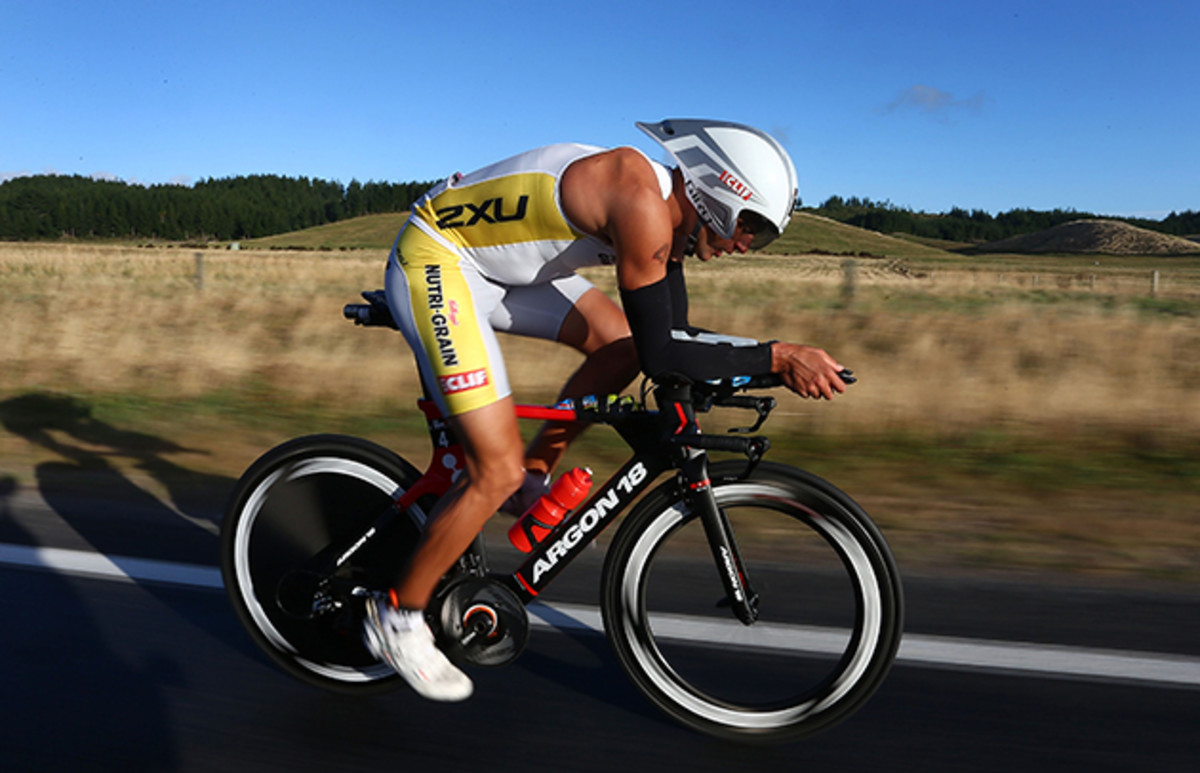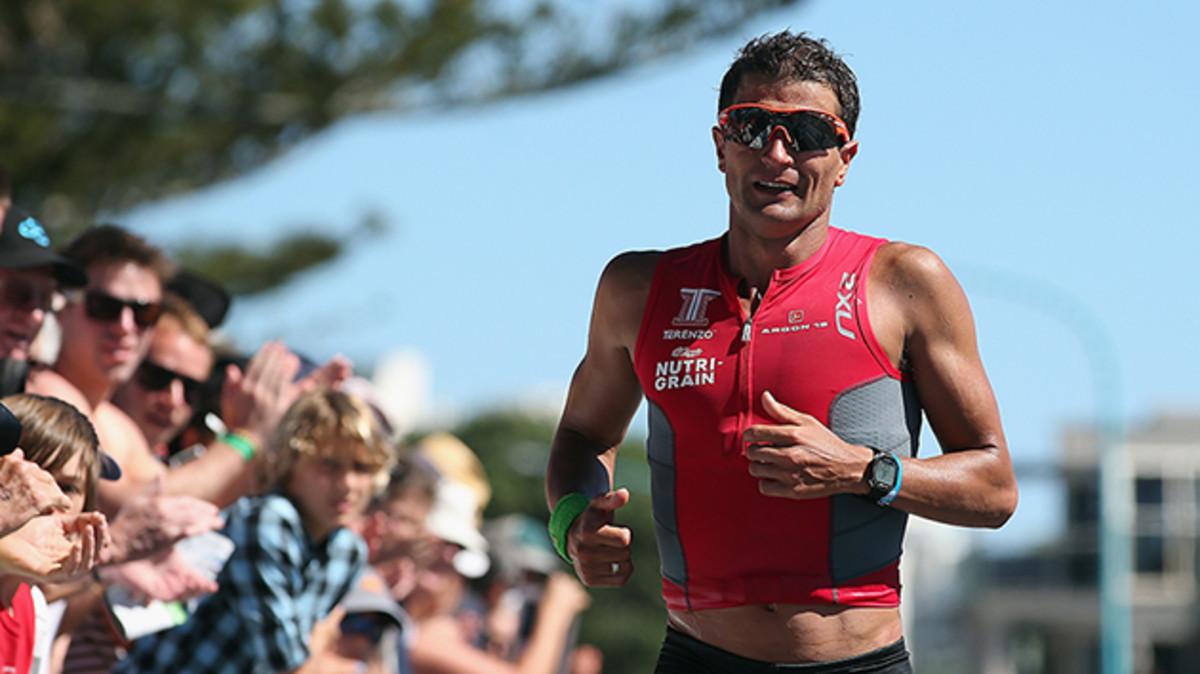Behind the Body: Pro triathlete Terenzo Bozzone

Three hours, forty-eight minutes and fifty seconds: that’s how long it took triathlete Terenzo Bozzone to complete his most recent race during the 2014 IRONMAN Mont-Tremblant 70.3 World Championships. It’s no secret that completing the 1.2-mile swim, 56-mile bike and 13.1-mile run takes exceptional dedication. The triathlete’s lean body is carved out through hundreds of hours of vigorous training. For Bozzone, that disciplined mindset developed early on from karate lessons and competitive swimming as a child in New Zealand, but his interest and abilities in athletics came naturally. After a wakeboarding accident ruptured his left eardrum at 13, Bozzone wasn’t allowed to swim, so he borrowed a friend’s bicycle and quickly fell in love.
“I had to be active and do something, so I entered in duathlons—which is run, bike, run—and then from there I started competing and eventually transitioned to triathlons,” Bozzone says.
Iceland Annie's fight back to the top of the CrossFit Games
Now, leading up to the IRONMAN World Championships in Kona, Hawaii, on October 11, Bozzone has 15 years of experience in the sport and 37 international titles, including 23 Ironman 70.3, or half-Ironman, triathlon titles. It’s been four years since Bozzone has raced the full triathlon distance—a 2.4-mile swim, 112-mile bike race and 26.2-mile marathon—on the Big Island, but he has followed a strict workout regimen and diet to achieve his sculpted physique and secure a strong comeback in Kona.
age | height | weight |
|---|---|---|
29 years old | 5-foot-10 | 150 lbs. |
Training grounds: Los Angeles, Calif. in the summers and Auckland, New Zealand in the winters
Nickname: T, “or just Terenzo.”
Body fat: Around seven percent.
Hours spent training per day: Anywhere between 4 to 8 hours.
Distance logged per week: 3,500 yards of swimming, 650 miles on the bike and about 100 miles of running per week.
Days spent training per week: Seven. “I couldn’t tell you the last time I had a day off. If I don’t exercise, I tighten up, so I workout at 4:30 a.m. before I go to the airport or jog or walk when I get to my destination.”

Hours spent in the weight room per week: About 90 minutes. “With all the other training I do, too much weight takes away from the quality I can give. We focus on core and glute strength a few days a week.”
Go-to workout: Hill repeats. “I call it my money workout. It’s 6 to 9 repeats up a 4% incline on a hill on the roads. I track my cadence to keep it at a rate of 94 strides per minute up the gradient.”
Secret workout: Keeping consistent with my training. “Monitoring my heart rate every workout and comparing it with my power output on my bike helps me to stay in that mental zone and understand more about myself.”
Biggest physical challenge: The full distance races. “Growing up I was racing 2 to 4-hour races, but the Ironman distance is 8 to 8.5-hours. I’ve struggled for a few years to double that distance and stay strong through the whole race. Not sure if it’s a physical or mental challenge, but it’s something I’ve been working on.”
Calories consumed per day:“I don’t count them, but roughly around 3,000-3,500 a day. I eat veggies, lots of green stuff, protein and good healthy fats. Not too many carbs in the evening.”
Best recovery tip: Protein shake, recovery compression socks and naps in the afternoon. “As soon as I get in the door, I load it up with greens, beets, protein powder, an essential fatty acids oil blend and green superfoods powder. My Polar V800 watch has an indicator of how much recovery time I need after workouts. Your heart is a muscle as well, so it helps me understand how fatigued your heart is and the load for the workout.”
Pre-race meal: Salmon, sweet potatoes and a big salad.

Celebration meal: Hamburgers. “And beer.”
Dietary vices: Chocolate and candy. “I have a big sweet tooth. I try to avoid it by snacking on healthy sweets like fruit, but when I treat myself, it’s Cadbury Marvelous—it’s chocolate with gummies and these crackling things inside. It’s the best thing since sliced bread, honestly.”
Alcohol of choice: Scotch or red wine.
What he likes about endurance races:“It’s such a test on the body and racing is an even bigger test mentally. I like to see how well I react, especially against hundreds of talented guys who trained just as hard. You find out who can mentally turn on that extra 5% and have a good race. Searching for the ability to do that is pretty cool.”
Favorite discipline in the triathlon:“Biking or the running, but usually the run.”
Why he likes running: “Running is something everyone can do. When you feel comfortable being out there it’s a pretty special feeling, and whenever I’m running I just think of running free. You by yourself with the elements.”
Favorite part about the WC in Kona, Hawaii:“Hawaii is that much harder. The heat, humidity and win make the course that much tougher and your competing against all he best in the world. I’m looking forward to seeing how well I’ve prepared and how well I can execute. It’s going to help me develop into the athlete I want to become in the future.”
